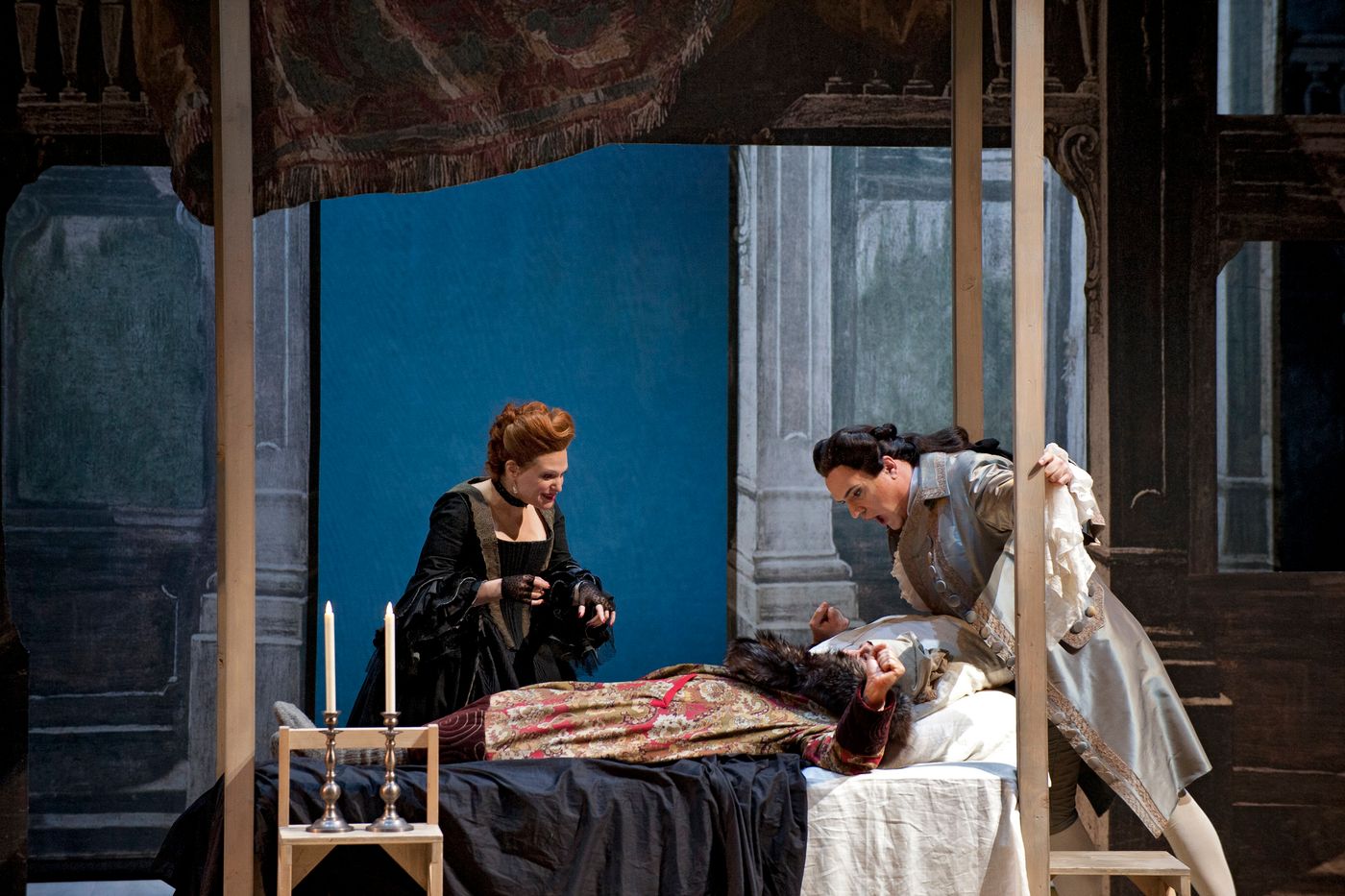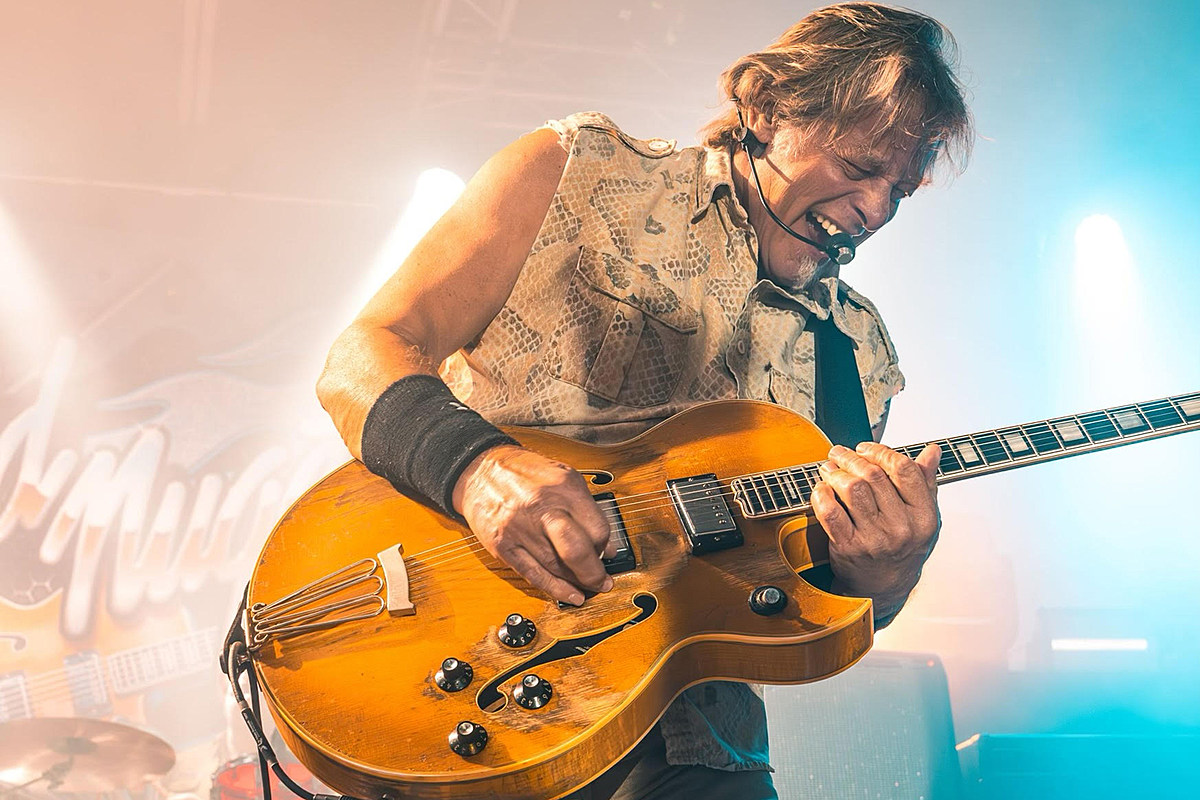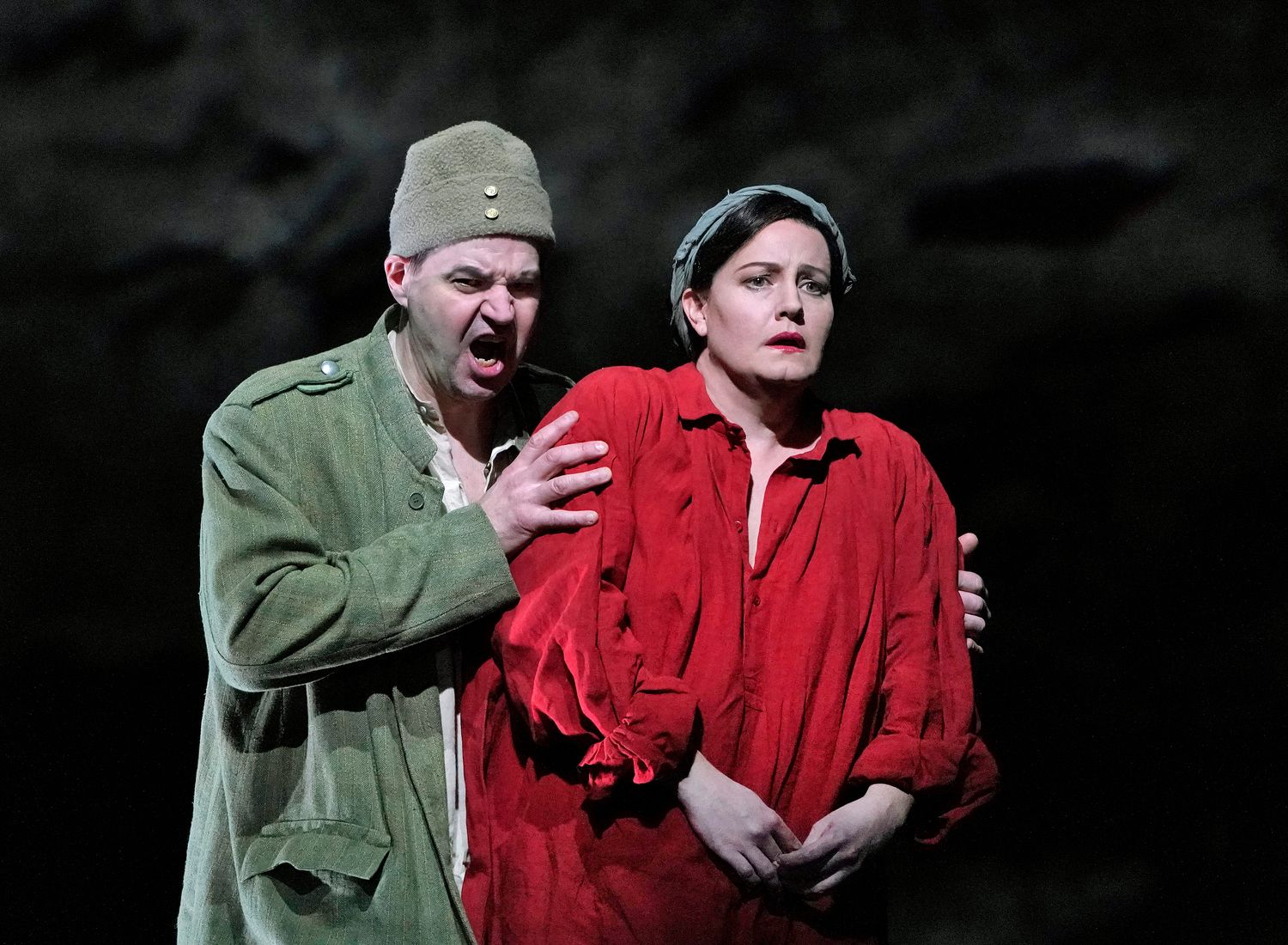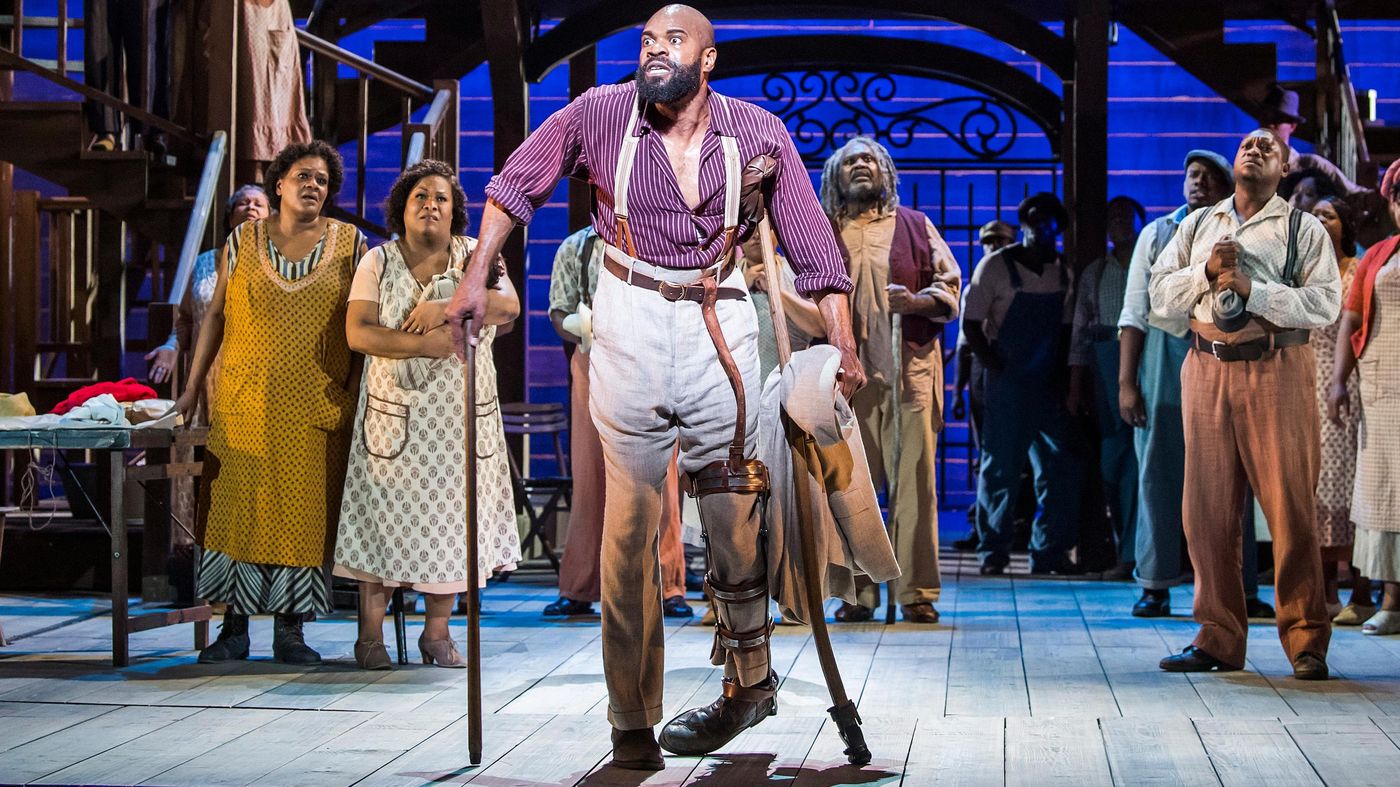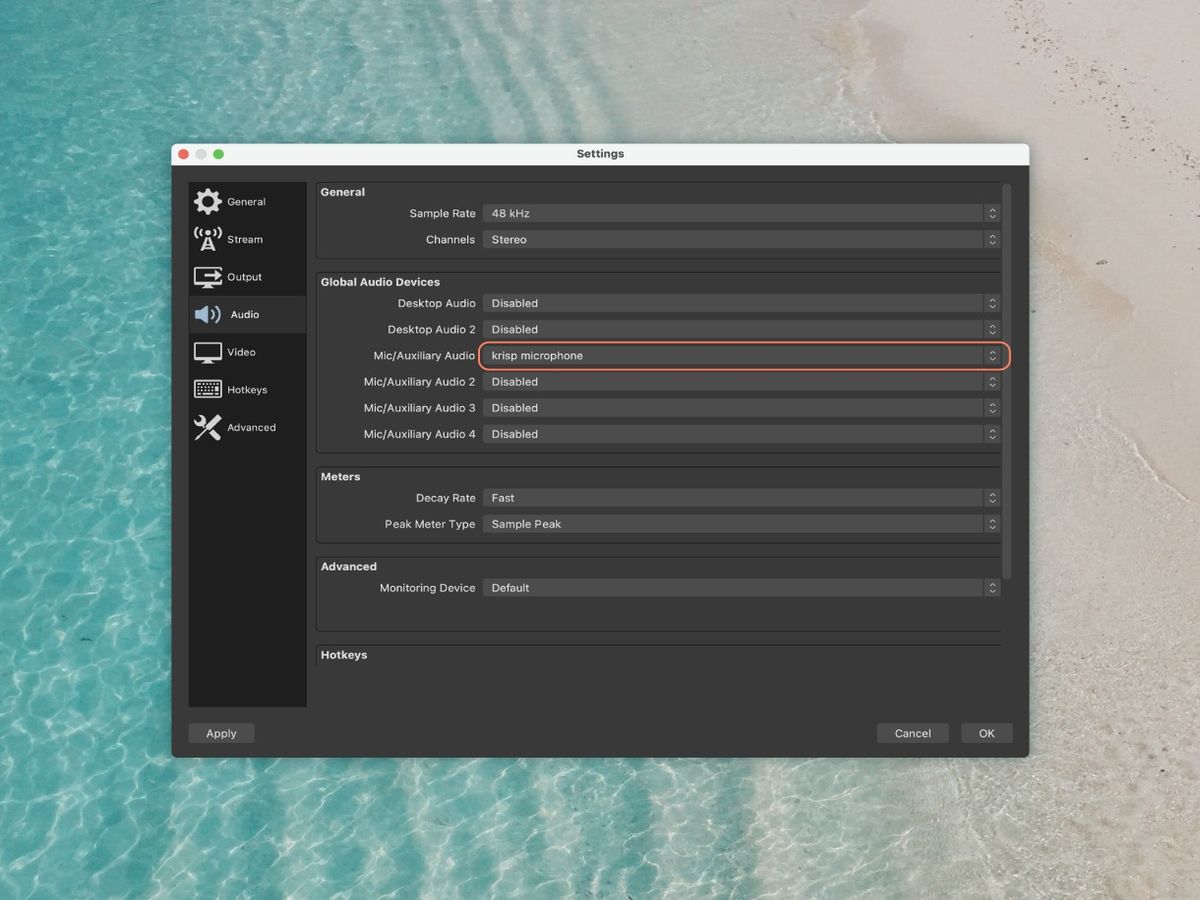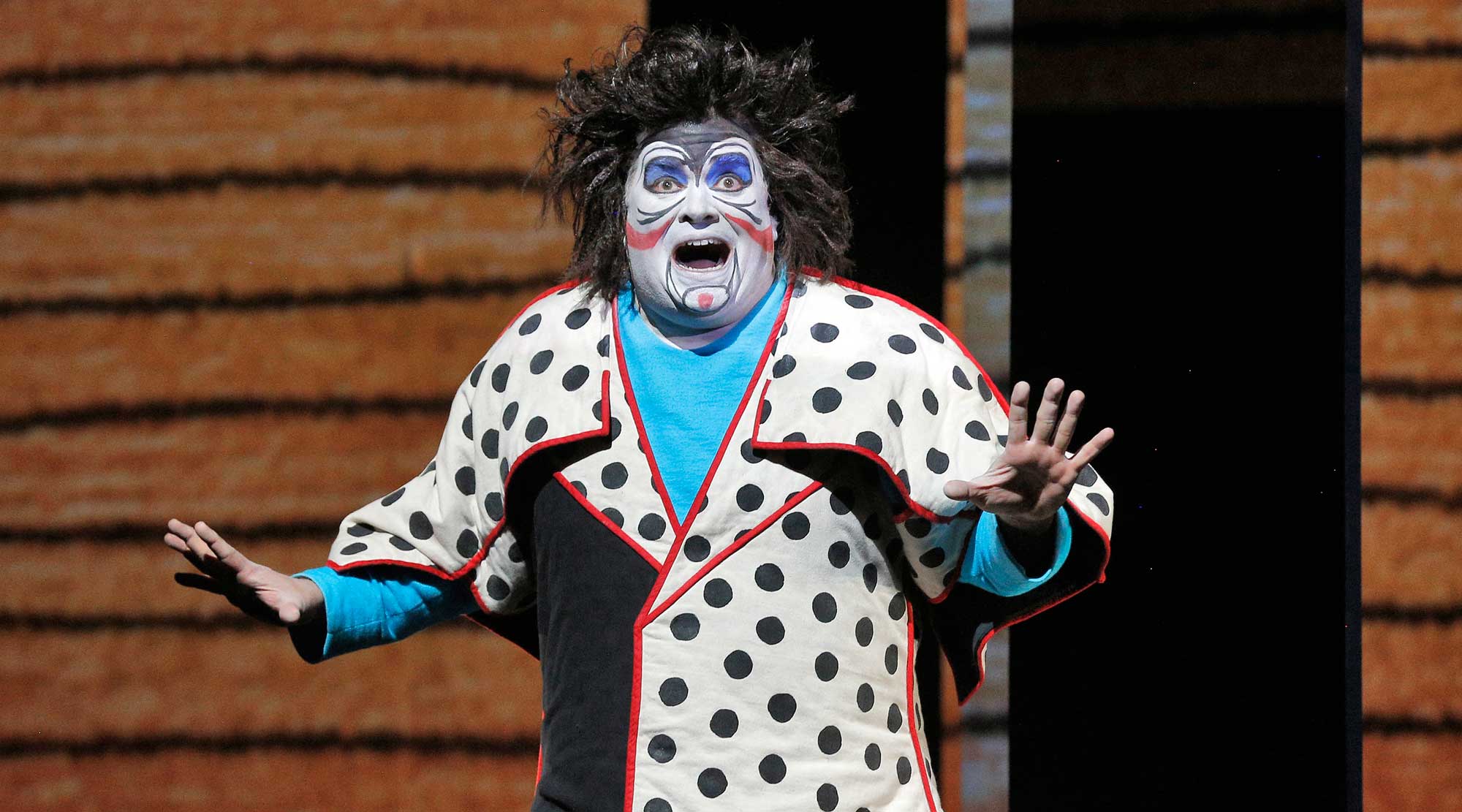Home>Events & Info>Opera>Which Elements Apply To Comic Opera?


Opera
Which Elements Apply To Comic Opera?
Modified: January 22, 2024
Discover the essential elements that make comic opera a unique and entertaining genre within the world of opera. Find out how humor and light-heartedness come together in opera performances.
(Many of the links in this article redirect to a specific reviewed product. Your purchase of these products through affiliate links helps to generate commission for AudioLover.com, at no extra cost. Learn more)
Table of Contents
Introduction
Comic opera is a genre of musical theater that combines elements of comedy and music to create an entertaining and often humorous experience for the audience. It has a long and rich history, dating back to the 18th century, and continues to be a popular form of entertainment today.
The primary aim of comic opera is to make people laugh, using witty dialogue, humorous situations, and comedic characters. It offers a lighthearted and enjoyable alternative to more serious operatic genres, such as tragedy or drama. Comic opera often incorporates elements of farce, slapstick comedy, and satire, allowing for both laughter and social commentary.
With its fusion of music and comedy, comic opera has the power to engage and entertain people of all ages and backgrounds. It can be found in various forms, including full-length operas, operettas, and musical comedies. The genre offers a unique blend of theatricality, storytelling, and musicality, making it a truly dynamic and engaging art form.
In this article, we will explore the defining characteristics of comic opera, its historical background, the role of music, the elements of comedy, the importance of characters, and the themes and topics commonly found in the genre. We will also take a look at some famous examples of comic operas throughout history.
So, sit back, relax, and prepare to dive into the captivating world of comic opera.
Definition of Comic Opera
Comic opera is a genre of musical theater that combines elements of comedy, music, and storytelling. It is characterized by its light-hearted and humorous approach, aiming to entertain the audience through witty dialogue, comedic situations, and amusing characters. Unlike its more serious counterparts, such as tragedy or drama, comic opera focuses on providing laughter and enjoyment.
The term “comic opera” is often used interchangeably with “opera buffa” or “opéra comique. While these terms originated from different countries and time periods, they all refer to the same genre. Comic operas are typically sung throughout, with the music playing a central role in conveying the emotions, enhancing the humor, and advancing the narrative of the story.
Comic opera encompasses a variety of styles and forms. It can range from full-length operas, which typically have multiple acts and a grand scale production, to shorter works known as operettas or musical comedies. Operettas are often characterized by their lighter tone, shorter running time, and simpler staging requirements.
One of the defining features of comic opera is its ability to mix comedy and music seamlessly. The music in comic opera serves as a vehicle for expression, adding depth to the characters, amplifying the comedic timing, and creating a dynamic and engaging experience for the audience.
While comedy is at the heart of comic opera, it is important to note that it is not simply a series of jokes or humorous gags set to music. It is a combination of well-crafted writing, skilled performances, and carefully composed music that work harmoniously together to evoke laughter and delight.
Comic opera has a universal appeal and has been enjoyed by audiences around the world for centuries. Its ability to blend music, comedy, and storytelling makes it a vibrant and beloved form of entertainment that continues to captivate audiences to this day.
Historical Background
The roots of comic opera can be traced back to the early 18th century in Italy, where the genre of opera buffa flourished. Opera buffa, meaning “comic opera” in Italian, emerged as a reaction against the more serious and formal operatic styles popular at the time.
Opera buffa often featured a combination of comedic situations, witty dialogue, and lively music. It incorporated elements of improvisation, allowing performers to add their own comedic flair to the performances. The genre gained popularity among both the aristocracy and the working-class audiences, as it offered a light-hearted and accessible form of entertainment.
As comic opera spread throughout Europe, it underwent various transformations and adaptations in different countries. In France, opéra comique emerged in the 18th century, blending spoken dialogue with musical numbers. It became a significant form of entertainment, capturing the essence of French wit and humor.
In the 19th century, comic opera continued to evolve with the emergence of operetta, a lighter and more comedic form of musical theater. Operetta became especially popular in Austria, Germany, and France, with composers like Jacques Offenbach, Johann Strauss II, and Gilbert and Sullivan creating iconic works in the genre.
With the advent of the 20th century, the boundaries between comic opera, operetta, and musical comedies became increasingly blurred. The integration of popular music styles, dance numbers, and more modern comedic elements led to the creation of a new form of entertainment known as the musical comedy, popularized in the United States.
Today, comic opera continues to be performed and celebrated worldwide. It has evolved to incorporate contemporary themes and styles, while still preserving its core elements of comedy, music, and storytelling. From the classic comedic operas of Mozart and Rossini to contemporary works infused with humor, comic opera remains a beloved and enduring genre that continues to delight audiences around the globe.
Characteristics of Comic Opera
Comic opera, as a genre, is defined by several distinct characteristics that set it apart from other forms of musical theater. These characteristics contribute to its comedic and entertaining nature, making it a beloved form of entertainment. Below are some of the key characteristics of comic opera:
- Humorous Situations: Comic opera thrives on funny and amusing situations. It often involves mistaken identities, miscommunication, and comedic misunderstandings that lead to hilarious outcomes.
- Witty Dialogue: Clever and snappy dialogue is a hallmark of comic opera. The characters engage in quick repartee, exchanging humorous remarks and engaging in witty banter.
- Physical Comedy: Physical comedy plays a significant role in comic opera. Slapstick humor, exaggerated gestures, and comedic movements enhance the comedic effect and elicit laughter from the audience.
- Satire and Social Commentary: Comic opera often incorporates satire and social commentary, offering a lighthearted lens through which societal norms, customs, and institutions are critiqued and parodied.
- Fast Pace: Comic opera typically maintains a fast-paced and energetic tempo. The lively music and quick dialogue keep the momentum flowing, ensuring the audience remains engaged and entertained.
- Contrasting Characters: Comic opera often features a diverse range of characters with contrasting personalities and motivations. These characters, such as the clever trickster or the bumbling fool, contribute to the comedic interplay and dynamic interactions.
- Comic Ensembles: Comic opera frequently includes ensemble numbers, where multiple characters come together to create comedic chaos or harmonious comedic moments. These ensemble scenes often involve intricate staging, synchronized movements, and comedic timing.
- Musical Pastiche: Comic opera frequently incorporates musical pastiche, where composers draw inspiration from various musical styles and genres to create humorous and entertaining musical moments. This can range from parodies of well-known songs to playful musical references.
Together, these characteristics work in tandem to create a vibrant and engaging theatrical experience for the audience. Comic opera offers laughter, entertainment, and a temporary escape from reality, making it a beloved and enduring genre of musical theater.
Use of Music in Comic Opera
Music plays a central role in comic opera, serving as a powerful tool to enhance the comedic effect, evoke emotions, and drive the narrative forward. The use of music in comic opera is essential in creating a dynamic and engaging experience for the audience. Here are some key aspects of how music is utilized in comic opera:
Expressing Emotions: Music allows characters in comic opera to express their emotions and thoughts in a heightened and melodious manner. Through arias, duets, and ensemble numbers, characters can convey their joy, frustration, love, or mischief, adding depth and richness to their comedic personas.
Enhancing Comedy: Music plays an integral role in amplifying the comedic moments in comic opera. The timing of musical cues, the use of syncopated rhythms, and the juxtaposition of music with comedic situations contribute to the overall comedic effect. For example, rapid-fire comic patter songs, with their clever wordplay and rhythmic precision, often generate laughter and applause.
Dramatic Irony: In comic opera, music can create dramatic irony by contrasting the underlying emotions of a character with the comedic situation. While a character may be singing a light-hearted tune, the audience is aware of their true feelings or intentions, resulting in a humorous disconnect between the music and the reality of the situation.
Musical Pastiche: Comic opera often incorporates musical pastiche, borrowing melodies and styles from existing music to create comedic effects. Composers may playfully reference well-known tunes, parody popular songs, or draw inspiration from various musical genres, adding an extra layer of entertainment and familiarity for the audience.
Choreography: Music in comic opera is not limited to vocal performances. It also serves as a foundation for choreographed dance sequences, adding an extra layer of visual interest and humor. Choreography can range from intricate ensemble numbers to comedic solo dances, providing a feast for both the eyes and the ears.
Synchronization with Action: The music in comic opera is carefully synchronized with the actions on stage to heighten comedic timing. Comedic moments, such as pratfalls, sight gags, or punchlines, are often punctuated by musical accents or stings, enhancing the comedic impact and eliciting laughter from the audience.
Overall, the use of music in comic opera is a fundamental element that elevates the comedic experience. It brings energy, emotion, and theatricality to the performances, creating an immersive and unforgettable musical journey for both the performers and the audience.
Elements of Comedy in Comic Opera
Comic opera is known for its ability to make audiences laugh and bring joy through its humorous elements. These elements of comedy are carefully crafted and orchestrated to create a delightful and entertaining experience. Here are some of the key elements of comedy commonly found in comic opera:
- Wordplay and Wit: Comedy in comic opera often revolves around clever wordplay, puns, and witty dialogue. Characters engage in quick exchanges, snappy comebacks, and humorous remarks that keep the audience engaged and amused.
- Physical Comedy: Physical comedy, including slapstick humor, exaggerated movements, and comedic gestures, is a popular element in comic opera. It adds visual hilarity to the performances and enhances the comedic effect.
- Situational Comedy: Comic opera thrives on situations that are inherently humorous. These can include mistaken identities, disguises, mix-ups, and comedic misunderstandings. The unexpected and absurd situations create comedic tension and generate laughter.
- Irony and Satire: Irony and satire play significant roles in comic opera. The genre often uses humor to mock and satire societal norms, customs, and institutions. Satirical commentary adds depth to the comedic moments and can provide a deeper layer of meaning.
- Recurring Jokes and Running Gags: Comic opera sometimes employs recurring jokes or running gags that go throughout the performance. These jokes can become a source of anticipation and amusement for the audience as they are repeated or evolve over time.
- Misdirection and Surprise: The element of surprise is often used to generate laughter in comic opera. Characters’ actions and intentions may be intentionally misdirected, leading to unexpected outcomes that catch the audience off guard and create comedic moments.
- Exaggeration: Exaggeration is a common comedic technique in comic opera. Characters may have exaggerated personalities, movements, or facial expressions, heightening the humorous effect and eliciting laughter from the audience.
- Comedic Timing: Timing is crucial in comic opera. Precise comedic timing allows for the delivery of punchlines, the execution of physical comedy, and the synchronization of comedic actions with musical cues, enhancing the comedic impact and maximizing laughter.
By incorporating these elements of comedy, comic opera creates a laughter-filled and enjoyable experience for the audience. The combination of witty dialogue, physical humor, irony, and clever storytelling adds depth to the comedic moments, making comic opera a delightful and entertaining genre.
Role of Characters in Comic Opera
Characters play a crucial role in the world of comic opera, bringing humor, wit, and charm to the stage. Each character adds a unique flavor to the comedic narrative and contributes to the overall entertainment of the performance. Here are some key aspects of the role of characters in comic opera:
- Comic Archetypes: Characters in comic opera often embody specific comedic archetypes that are designed to elicit laughter. These archetypes may include the clever trickster, the bumbling fool, the witty servant, or the naive ingenue. These character types create contrast, generate comedic interactions, and engage the audience through their distinct personalities.
- Contrasting Personalities: Comic opera thrives on the interplay between characters with contrasting personalities. The clash of personalities, such as the intelligent and cunning character paired with the dimwitted and gullible one, creates comedic tension and opportunities for humorous exchanges.
- Over-the-Top Exaggeration: Characters in comic opera are often characterized by their exaggerated personalities, quirks, and physicality. This exaggeration adds to the comedic effect, making the characters larger than life and creating memorable comedic moments.
- Comic Foils: Characters can serve as foils to one another, enhancing the comedic narrative. Foils are characters who are set up as opposites in terms of personality, behavior, or goals. Through their interactions, foils highlight the comedic qualities of each other, leading to humorous conflicts or misunderstandings.
- Physical Comedy: Characters in comic opera often engage in physical humor, utilizing exaggerated gestures, pratfalls, and comedic movements. This physicality adds visual humor and comedic timing to the performances, creating memorable comedic moments.
- Comic Transformation: Comic opera sometimes includes characters who undergo transformation throughout the course of the story, either in their behavior, appearance, or understanding. These transformations can lead to comedic surprises and generate laughter, as characters find themselves in unexpected or comical situations.
- Interaction with the Audience: Characters in comic opera can directly engage with the audience, breaking the fourth wall and inviting them into the comedic world of the performance. Through asides, witty remarks, or non-verbal cues, characters can create an interactive experience, establishing a connection that enhances the comedic impact.
- Vocal Prowess: Characters in comic opera are often required to showcase their vocal talents, delivering comedic songs with precision and skill. The ability to convey humor through vocal performance, such as comedic timing, vocal range, and expressive delivery, is crucial for bringing the characters to life.
The memorable and entertaining characters in comic opera contribute to the comedic narrative, infusing the performances with laughter and joy. Their exaggerated traits, comedic interactions, and lively personalities create a world where laughter reigns, making comic opera a beloved and enduring form of entertainment.
Themes and Topics in Comic Opera
Comic opera explores a wide range of themes and topics, using humor, wit, and satire to comment on various aspects of society, human nature, and relationships. While comedy is at the forefront, comic opera often incorporates deeper meanings and social commentary. Here are some common themes and topics found in comic opera:
- Love and Romance: Love and romance are frequently explored in comic opera, often with humorous twists and complications. The pursuit of love, romantic misunderstandings, and comedic courtship are recurring themes that add charm and entertainment to the performances.
- Social Class and Status: Comic opera often addresses social class distinctions and the disparities between the wealthy and the working class. It satirizes the pretensions and absurdities of those in power, highlighting the comedic consequences that ensue when social boundaries are crossed.
- Mistaken Identities: The theme of mistaken identity is a classic comedic element in comic opera. Characters may find themselves caught in situations where they are mistaken for someone else, leading to comedic confusion, humorous misunderstandings, and comedic revelations.
- Gender Roles and Role Reversals: Comic opera frequently challenges traditional gender roles and expectations. It often features strong and independent female characters who defy societal norms, as well as comedic situations that involve role reversals and gender-based humor.
- Social Commentary and Satire: Comic opera is known for its satirical nature, using humor to critique societal norms, customs, and institutions. It often highlights the absurdities of bureaucracy, politics, and societal expectations, allowing for both laughter and reflection.
- Marriage and Relationships: The institution of marriage and relationships is a recurring theme in comic opera. It explores the challenges, misunderstandings, and comedic situations that arise in romantic relationships, often with witty dialogue and humorous interactions.
- Politics and Power: Comic opera sometimes incorporates politics and power dynamics into its narratives. It uses humor and satire to lampoon political figures, poke fun at corruption, and highlight the follies and flaws of those in positions of authority.
- Folly and Human Foibles: Comic opera draws attention to the foolishness and quirks of human nature. It highlights the comedic side of our flaws, weaknesses, and irrational behavior, allowing the audience to laugh at themselves and find humor in the human condition.
Through its exploration of these themes and topics, comic opera provides not only entertainment but also a mirror to society, offering a unique blend of comedy, music, and social commentary. It reminds us to laugh at ourselves, question societal norms, and find joy in the humorous absurdities of life.
Famous Examples of Comic Operas
Comic opera has given rise to numerous beloved and iconic works throughout history. These operas continue to captivate audiences with their blend of comedy, music, and engaging storytelling. Here are some famous examples of comic operas:
- The Marriage of Figaro: Composed by Wolfgang Amadeus Mozart, “The Marriage of Figaro” is a timeless masterpiece and one of the most renowned comic operas. It explores themes of love, lust, and mistaken identities with a blend of comedic situations, witty dialogue, and beautiful music.
- The Barber of Seville: Gioachino Rossini’s “The Barber of Seville” is a lively and humorous opera that tells the story of Count Almaviva’s pursuit of the beautiful Rosina, with the help of the cunning barber Figaro. It features memorable arias and ensemble pieces, providing plenty of comedic moments.
- Die Fledermaus: Johann Strauss II’s “Die Fledermaus” is a delightful Viennese operetta known for its joyful melodies and captivating waltzes. Set during a masquerade ball, the opera tells a story of mistaken identities, romantic entanglements, and comedic misunderstandings.
- The Pirates of Penzance: Written by the duo of Gilbert and Sullivan, “The Pirates of Penzance” is a comic operetta that parodies the swashbuckling pirate genre. It tells the story of Frederic, a young man mistakenly apprenticed to a band of pirates, and his quest for love and freedom. The operetta features witty lyrics and catchy tunes.
- Cosi fan tutte: Another great work by Mozart, “Cosi fan tutte” is a comedic opera that delves into themes of love, faithfulness, and deception. The opera tells the story of two men who test the fidelity of their fiancées, leading to humorous and unexpected outcomes.
- H.M.S. Pinafore: Gilbert and Sullivan strike again with “H.M.S. Pinafore,” a satirical operetta that skewers the British navy and social hierarchies. Through lively music, clever lyrics, and comedic characters, it provides a witty commentary on class distinctions and love across social boundaries.
- Don Pasquale: Gaetano Donizetti’s “Don Pasquale” is a classic Italian comic opera that tells the story of an old bachelor who seeks a young bride. The opera is filled with humorous misunderstandings, elaborate disguises, and lively music that showcases Donizetti’s mastery of the comedic genre.
These are just a few examples of the many famous comic operas that have become staples of the genre. Each of these works showcases the enduring appeal of comic opera, with their engaging stories, memorable characters, and the seamless blending of comedy and music. Whether through Mozart’s wit, Rossini’s melodies, or the collaboration of Gilbert and Sullivan, these opera masterpieces continue to bring smiles to the faces of audiences worldwide.
Conclusion
Comic opera is a genre of musical theater that has brought laughter, joy, and entertainment to audiences for centuries. With its unique blend of comedy, music, and storytelling, comic opera offers a lighthearted and enjoyable alternative to more serious operatic genres.
Throughout this article, we have explored the defining characteristics of comic opera, its historical background, the role of music, the elements of comedy, the importance of characters, and the themes and topics commonly found in the genre. We have also delved into famous examples of comic operas that continue to captivate audiences with their wit, charm, and memorable music.
Comic opera not only aims to entertain, but also provides social commentary, satirizing societal norms and offering a humorous lens through which we can reflect on our own follies and quirks. It has the power to bring people together, transcending time and cultural barriers, with its universal themes of love, mistaken identities, and societal absurdities.
As we sit in the theater or tune in to a performance, comic opera transports us to a world of laughter, where we can temporarily escape the stresses of everyday life. It allows us to laugh at ourselves, question social conventions, and find joy in the comedic aspects of the human condition.
So, whether it’s the quick wit of Mozart’s “The Marriage of Figaro,” the delightful melodies of Rossini’s “The Barber of Seville,” or the satirical commentary of Gilbert and Sullivan’s works, comic opera continues to enchant and entertain us. It reminds us of the power of laughter and the enduring appeal of music in bringing joy to our lives.
So, the next time you have the opportunity to experience a comic opera, immerse yourself in its world of comedy, music, and storytelling. Let the laughter wash over you and embrace the magic of this captivating art form.

